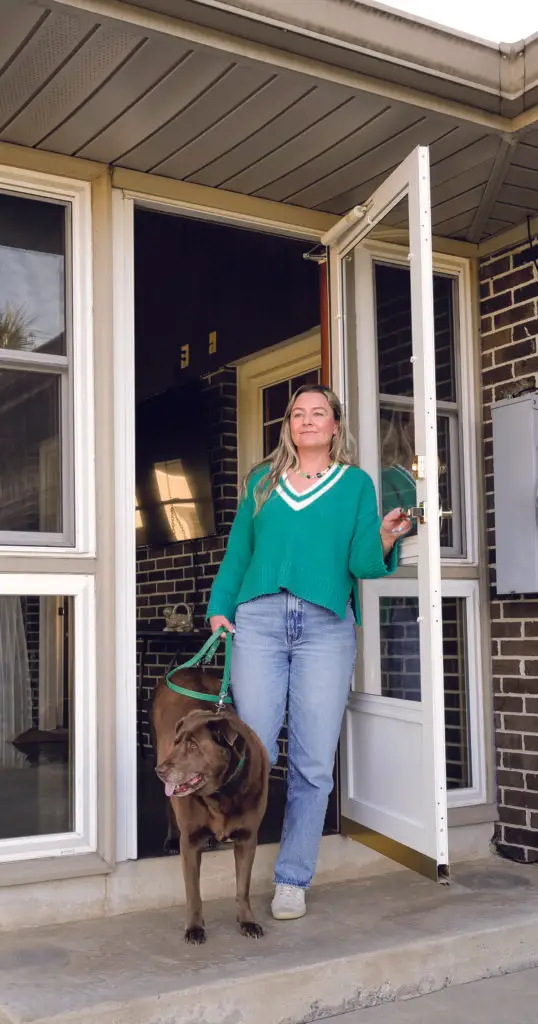I like the style of my front door, but it is drafty. Can you recommend ways to fix the drafts and make it more energy efficient?
The front door of your home has a lot of meaning. It sets the stage for the home and is the first impression for your guests. Beyond curb appeal, the front door is a good place to look for energy savings.
Efficient exterior doors seal tightly and don’t allow air to pass through. Limiting airflow from exterior doors can result in lower heating and cooling costs. Throughout the years, the construction of exterior doors has improved to increase their efficiency. If your door is older, it likely is not insulated.
There are two strategies to address an inefficient front door: Purchase a new one or work with what you have.
If you want to replace your front door for aesthetic purposes, make it more functional or improve its efficiency, consider upgrading to an ENERGY STAR®-certified model. The ENERGY STAR® certification ensures the door you buy meets efficiency criteria for your local area. It also means the National Fenestration Rating Council independently tested and verified the door.
Certification requires any windows in the door to be double or triple pane to reduce heat flow, which results in a more efficient home. While windows in doors offer aesthetics, more glass means less efficiency. ENERGY STAR® offers different criteria based on the amount of glass the door has. That means that the bigger the windows in a door, the lower the efficiency. The most efficient doors have no glass or windows in them.

Photo courtesy Mark Gilliland, Pioneer Utility Resources
U-factor is the primary rating for efficiency on doors and windows. U-factor is the inverse of R-value, which is the rating used for insulation. Unlike R-value where higher is better, the lower the U-factor, the more energy efficient the door. Check the U-factor on ENERGY STAR® doors at your local hardware store or online to help choose the most efficient door in your preferred style.
ENERGY STAR®-certified doors are made of the most efficient materials, such as fiberglass, wood cladding and steel with polyurethane foam core. They are built to fit snugly into their frames, reducing drafts and airflow.
When it comes to doors, you don’t have to sacrifice style for efficiency. There are many styles available to match the architecture, whether your home is historic or modern.
When completely replacing a door and the frame, you can use expanding foam or caulk to fill the space between the door jamb and structural framing. ENERGY STAR® doors have specific installation instructions to ensure the desired efficiency.
If a new door isn’t in your budget, there are less expensive options to reduce air leakage and improve your home’s efficiency.
All of that coming and going throughout the years can wear out weatherstripping. If you can see daylight around the edges of the door or underneath it, it’s time to stop those air leaks.
Weatherstripping around the door jamb can be adjusted to make a snug seal or replaced if it’s too far gone. Apply one continuous strip along each side, and make sure it meets tightly at the corners.
There are many different types of weatherstripping products on the market, so shop around for what’s right for you. Don’t forget the door sweep at the bottom of the door.
Adding a storm door can also help and is less expensive than replacing the entire door. Most storm doors have options for using a screen or glass. Swapping the screen for the glass insert can help save energy in both the winter and in the summer if you use air conditioning. Consider a storm door that’s easy to switch between glass and screen so you can maximize the benefits.
Open the door to energy savings by improving the efficiency of your exterior doors––without compromising the aesthetics of your home.
Miranda Boutelle is the chief operating officer at Efficiency Services Group in Oregon, a cooperatively owned energy efficiency company. She has more than 20 years of experience helping people save energy at home, and she writes on energy efficiency topics for the National Rural Electric Cooperative Association, the national trade association representing more than 900 local electric cooperatives.




